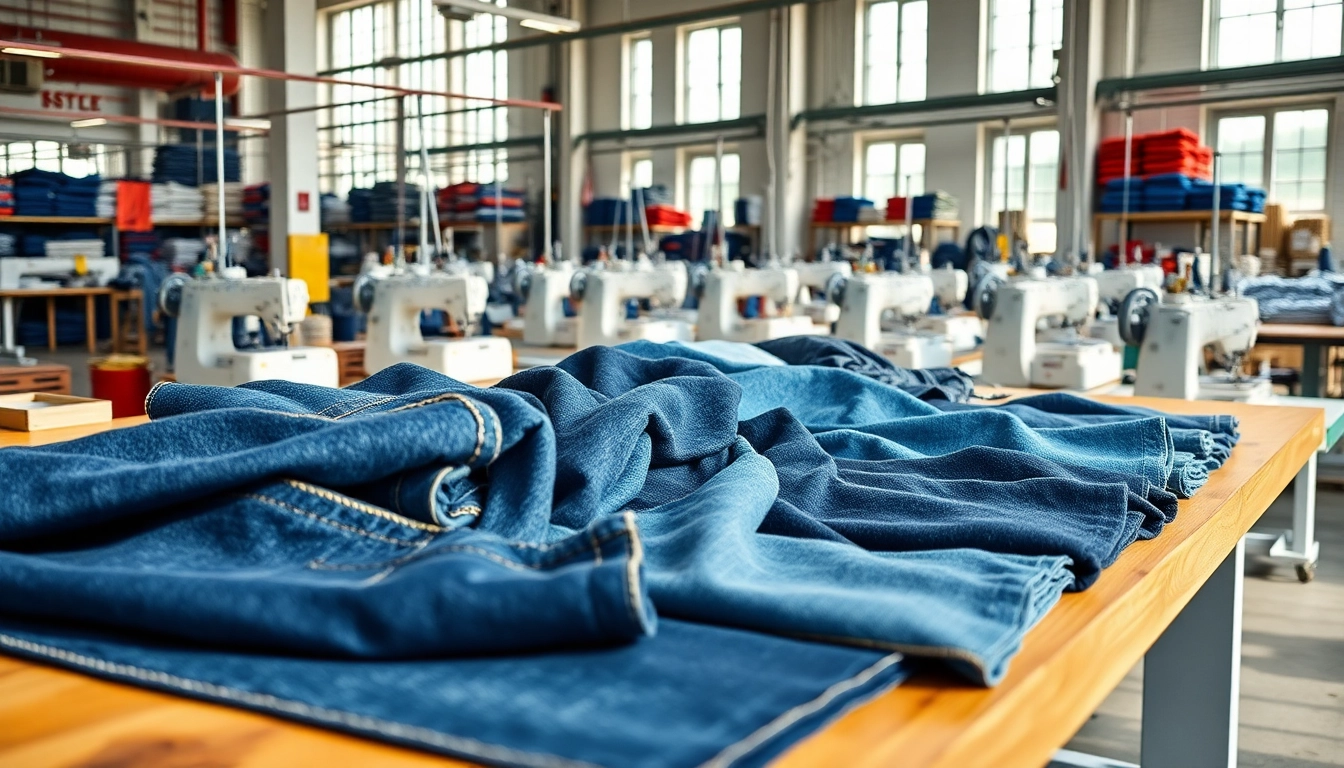Understanding Jeans Fabric Manufacturers
In today’s world, the selection of a fabric significantly influences the quality and style of a garment. Among the myriad of fabric options available, denim stands out as a versatile favorite, particularly in the realm of jeans. Understanding the role and significance of jeans fabric manufacturers is pivotal for designers, retailers, and consumers alike, as these manufacturers dictate the characteristics, trends, and sustainability of denim products available in the market.
History of Jeans Fabric Production
The journey of jeans fabric production dates back to the late 19th century when denim gained prominence with the rise of workwear in the industrial age. Originally designed for miners and laborers due to its durability, denim has evolved into a fashion staple across demographics. Manufacturers began experimenting with various blends and finishes, leading to the diverse range of denim fabrics we see today. The development of indigo-dyeing techniques, specifically the use of rope-dyed yarns, and innovations in weaving contributed to the unique characteristics that have turned denim into a cultural icon.
The Importance of Quality in Denim Manufacturing
Quality in denim is paramount for several reasons. High-quality denim yields a longer lifespan, which appeals to cost-conscious consumers who seek value in their purchases. Furthermore, quality impacts dye retention, texture, comfort, and overall aesthetic. Manufacturers often prioritize source materials, weaving techniques, and finishing processes, ensuring the final product meets consumer expectations and withstands the test of time. A strong emphasis on quality not only maintains brand reputation but also fosters consumer loyalty.
Key Fabrics Used by Jeans Fabric Manufacturers
Different types of denim fabrics are produced by manufacturers, each offering unique benefits. Commonly used fabrics include:
- Selvedge Denim: Known for its durability and the tightly woven edge of the fabric, selvedge denim is favored by high-end brands.
- Stretch Denim: With a blend of elastane, stretch denim offers comfort and flexibility, making it increasingly popular in fashion.
- Organic Denim: Manufactured from organically grown cotton, organic denim caters to environmentally conscious consumers.
- Rinsed and Stonewashed Denim: These treatments achieve different aesthetics, appealing to various fashion trends.
Criteria for Selecting a Denim Manufacturer
Selecting the right manufacturer for denim is crucial for businesses aiming to brand their products successfully. There are several criteria to consider when evaluating potential manufacturers.
Evaluating Fabric Quality and Durability
When assessing a potential manufacturer, evaluating fabric quality and durability is key. Variables such as thread count, weave structure, and fabric weight play a critical role in determining the longevity of the denim. Brands should consider conducting thorough tests to gauge fabric strength and performance under various conditions. Engaging with manufacturers who provide transparent insights into their production processes and quality control measures is also essential.
Sustainability Practices Among Jeans Fabric Manufacturers
With growing environmental concerns, choosing manufacturers that implement sustainable practices has become a priority. Sustainable denim production includes using organic materials, reducing water consumption during manufacturing, and adopting eco-friendly dyes. Brands should seek out partners who demonstrate a commitment to sustainability through certifications and initiatives aimed at minimizing their ecological footprint.
Understanding Pricing Structures in Denim Fabrics
Pricing structures can vary considerably based on various factors such as material cost, manufacturing process, and market demand. Understanding these pricing elements is crucial for brands to maintain profitability while offering competitive rates. Elements that influence pricing include minimum order quantities, bulk discounts, and the overall quality of materials used. Establishing clear communication with manufacturers regarding pricing can help brands make more informed decisions.
Innovations in Jeans Fabric Manufacturing
The ever-evolving landscape of denim fashion is a playground for innovation, with manufacturers continuously pushing boundaries to produce fabrics that meet changing consumer demands.
Technological Advances in Denim Production
Technological advancements have significantly transformed denim production processes. Innovations such as laser technology for distressing, automated weaving looms for precision fabric creation, and digital printing techniques have increased efficiency and reduced waste. These technologies not only lower production costs but also offer designers unprecedented capabilities in terms of creativity and customization.
Trends in Fabric Finishing Techniques
Finishing techniques greatly influence the final appearance and texture of denim. Manufacturers are increasingly focusing on eco-friendly finishing techniques that utilize less water and chemicals, accompanied by processes like enzyme washes for softer fabric without harming the environment. The shift towards these methods reflects consumer preferences for more sustainable products while maintaining aesthetics.
The Impact of Innovation on Consumer Preferences
As innovations emerge, they reshape consumer preferences. Today’s consumers are more informed and eco-conscious, leading to a demand for transparency and sustainability in production. Manufacturers who embrace innovative methods typically also see a shift in consumer loyalty, as shoppers become more inclined to support brands that align with their values.
Challenges Faced by Jeans Fabric Manufacturers
While the landscape offers significant opportunities, denim manufacturers also face their share of challenges that can impact production and market standing.
Supply Chain Issues and Raw Material Sourcing
Raw material sourcing can be a substantial challenge for denim manufacturers. Fluctuations in cotton prices, disruptions due to climatic conditions, and geopolitical considerations can lead to supply chain inconsistencies. Manufacturers need to establish strong relationships with suppliers and diversify sources to mitigate risks associated with sourcing raw materials.
Regulatory Standards Affecting Denim Production
Adhering to regulatory standards is crucial and can vary significantly by region. Compliance with environmental laws, labor regulations, and quality controls are mandatory, affecting production processes and costs. Manufacturers should stay abreast of such regulations to avoid potential disruptions and legal issues.
Adapting to Market Demand Fluctuations
Market demand for denim is often volatile, influenced by fashion trends, economic conditions, and seasonal changes. Manufacturers who can swiftly adapt their production in response to market shifts are more likely to thrive. Employing agile manufacturing processes and maintaining inventory flexibility can aid in meeting these unpredictable demands.
The Future of Jeans Fabric Manufacturing
The future of denim fabric manufacturing is poised for significant transformation, with an increasing emphasis on innovation, sustainability, and consumer engagement.
Predicted Trends in Denim Fashion
Predictions indicate a continued evolution in denim styles and materials. Expect a rising popularity of eco-friendly fabrics, vintage-inspired designs, and innovative fits that cater to diverse body types. Manufacturers will need to leverage these trends to attract modern consumers who prioritize authenticity and social responsibility in their purchasing decisions.
Emerging Markets for Jeans Fabrics
As global markets expand, emerging economies present new opportunities for denim manufacturers. Countries with growing fashion sectors and a youthful population are experiencing increased demand for quality denim products. Tapping into these markets can present lucrative avenues for growth and diversification.
How Manufacturers Can Stay Competitive
To remain competitive, manufacturers must prioritize innovation and consumer engagement. This includes investing in R&D for sustainable practices, improving supply chain resilience, and adopting new marketing strategies that involve direct consumer feedback. Building a robust online presence through social media and e-commerce will also enhance visibility and foster stronger connections with consumers.



